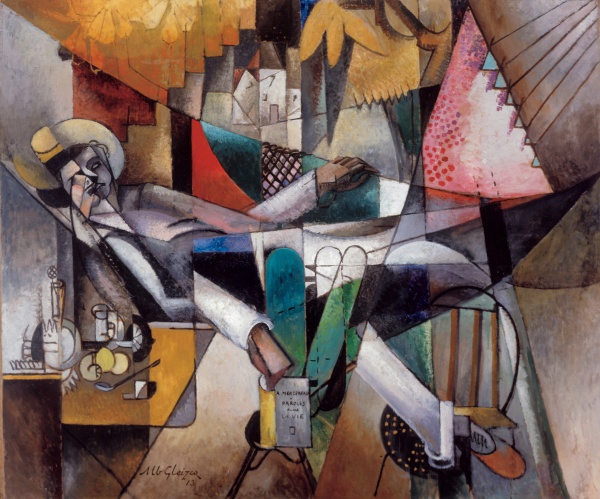Facts About Man in a Hammock
"Man in a Hammock" (or "L'Homme au hamac") is a captivating painting by the French artist Albert Gleizes, created in 1913. This piece exemplifies the mobile perspective concept detailed in the book "Du 'Cubisme'" co-authored by Gleizes and his friend Jean Metzinger. The reclining figure in the hammock is believed to be a portrait of Metzinger himself. Today, this masterpiece is housed at the Albright-Knox Art Gallery in Buffalo, New York.
This oil-on-canvas painting measures 130 by 155.5 cm and features a vibrant interplay of motion and strong diagonal lines. It is connected to other works by Gleizes, including various watercolors and sketches from different periods. The scene depicts a figure relaxing in a hammock, set against a backdrop of Parisian buildings. The composition is detailed with elements such as a park chair, a table, a vase, a glass, some fruit, and even a spoon.
In contrast to the more subdued tones often seen in early Cubism, Gleizes employs a wide range of colors in this painting. He seamlessly integrates the figure into the landscape using a non-linear grid, capturing elements of time and space. The painting beautifully reflects the profound bond and shared artistic vision of Gleizes and Metzinger.
As for its provenance, "Man in a Hammock" was initially owned by Jean Metzinger, then by Mme Russo, before finally being acquired by the Albright Art Gallery in 1957. This painting stands as a testament to the innovative spirit and collaborative efforts of Gleizes and Metzinger, marking a significant contribution to the world of Cubist art.

 Canada
Canada